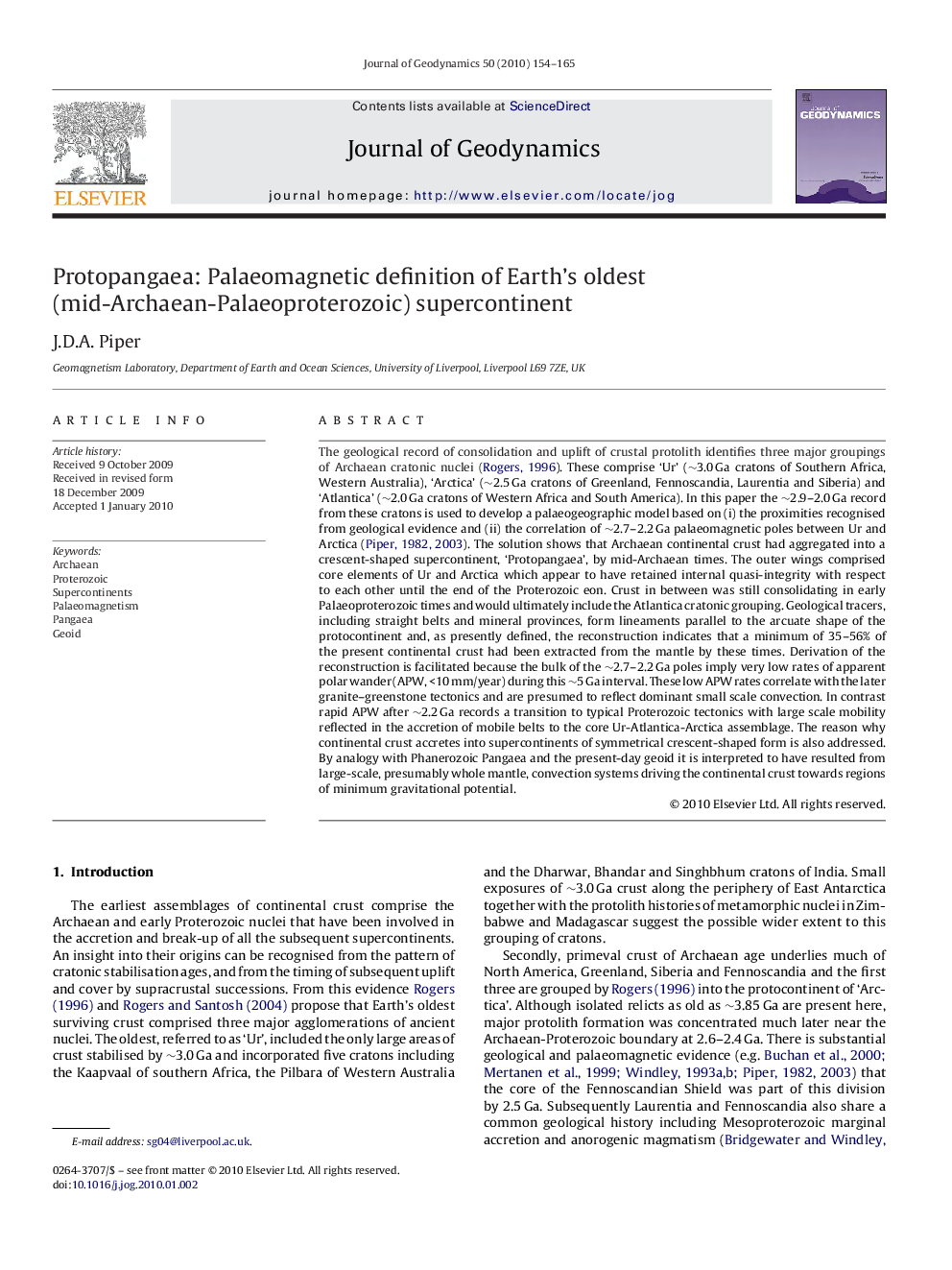| Article ID | Journal | Published Year | Pages | File Type |
|---|---|---|---|---|
| 4688530 | Journal of Geodynamics | 2010 | 12 Pages |
Abstract
The geological record of consolidation and uplift of crustal protolith identifies three major groupings of Archaean cratonic nuclei (Rogers, 1996). These comprise 'Ur' (â¼3.0Â Ga cratons of Southern Africa, Western Australia), 'Arctica' (â¼2.5Â Ga cratons of Greenland, Fennoscandia, Laurentia and Siberia) and 'Atlantica' (â¼2.0Â Ga cratons of Western Africa and South America). In this paper the â¼2.9-2.0Â Ga record from these cratons is used to develop a palaeogeographic model based on (i) the proximities recognised from geological evidence and (ii) the correlation of â¼2.7-2.2Â Ga palaeomagnetic poles between Ur and Arctica (Piper, 1982, 2003). The solution shows that Archaean continental crust had aggregated into a crescent-shaped supercontinent, 'Protopangaea', by mid-Archaean times. The outer wings comprised core elements of Ur and Arctica which appear to have retained internal quasi-integrity with respect to each other until the end of the Proterozoic eon. Crust in between was still consolidating in early Palaeoproterozoic times and would ultimately include the Atlantica cratonic grouping. Geological tracers, including straight belts and mineral provinces, form lineaments parallel to the arcuate shape of the protocontinent and, as presently defined, the reconstruction indicates that a minimum of 35-56% of the present continental crust had been extracted from the mantle by these times. Derivation of the reconstruction is facilitated because the bulk of the â¼2.7-2.2Â Ga poles imply very low rates of apparent polar wander (APW, <10Â mm/year) during this â¼5Â Ga interval. These low APW rates correlate with the later granite-greenstone tectonics and are presumed to reflect dominant small scale convection. In contrast rapid APW after â¼2.2Â Ga records a transition to typical Proterozoic tectonics with large scale mobility reflected in the accretion of mobile belts to the core Ur-Atlantica-Arctica assemblage. The reason why continental crust accretes into supercontinents of symmetrical crescent-shaped form is also addressed. By analogy with Phanerozoic Pangaea and the present-day geoid it is interpreted to have resulted from large-scale, presumably whole mantle, convection systems driving the continental crust towards regions of minimum gravitational potential.
Related Topics
Physical Sciences and Engineering
Earth and Planetary Sciences
Earth-Surface Processes
Authors
J.D.A. Piper,
